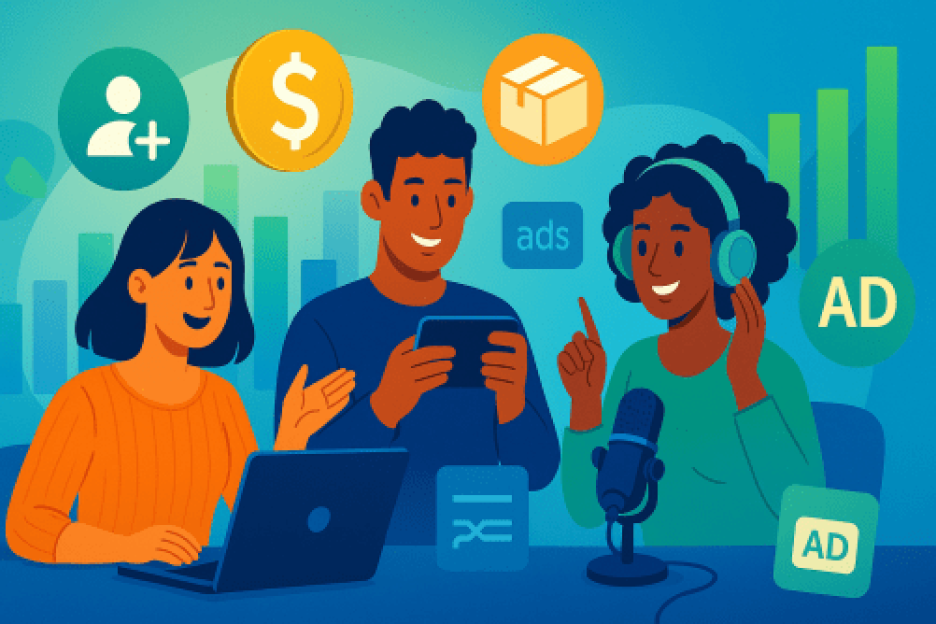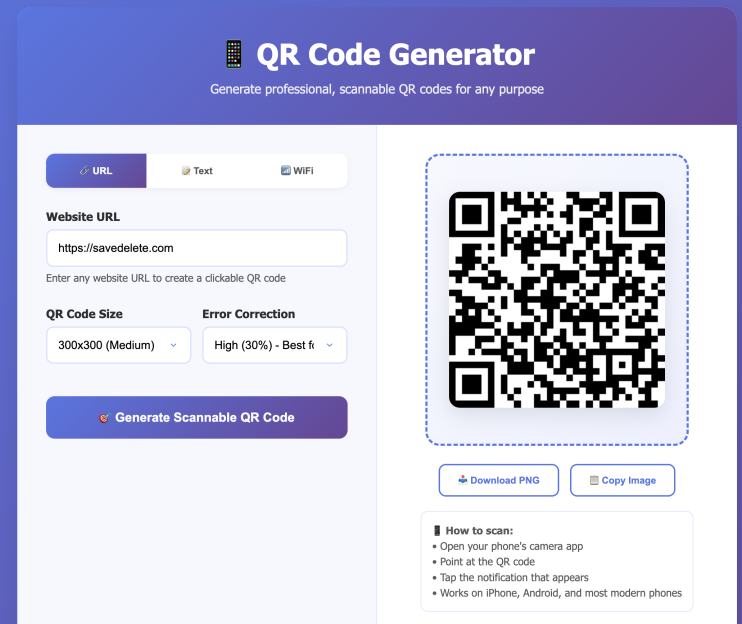Meta Title: Content Monetization Guide 2025: Turn Your Digital Content Into Money Meta Description: Learn proven content monetization strategies to generate passive income from your digital content. Discover 15+ revenue streams, platforms, and expert tips.
Picture this: You’ve just published your latest piece of contentâmaybe it’s a thoughtful blog post, an engaging video, or a compelling podcast episode. Your audience loves it, the engagement is flowing, but your bank account remains stubbornly unchanged. Sound familiar? You’re not alone in this struggle, and more importantly, you’re not stuck in it forever.
Welcome to the world of content monetization, where your creative passion meets financial freedom. In 2025, the global content monetization market is projected to reach an astounding $107 billion, proving that now is the perfect time to transform your digital efforts into sustainable income streams.
Table of Contents
- What is Content Monetization?
- The Creator Economy Landscape
- Direct vs. Indirect Monetization Strategies
- 15 Proven Content Monetization Methods
- Platform-Specific Monetization Strategies
- Building Multiple Revenue Streams
- Monetization Timeline and Growth Strategies
- Common Mistakes and How to Avoid Them
- Legal and Tax Considerations
- Future Trends in Content Monetization
What is Content Monetization?
Content monetization is the strategic process of generating revenue from your digital content, whether it’s blog posts, videos, podcasts, social media posts, or any other form of online material. It’s the bridge between your creative passion and financial sustainability, allowing content creators to build profitable businesses around their expertise and audience.
Content can be monetized in dozens of ways, including through ads, affiliate or influencer marketing (endorsing products), or creating personal service businesses from their brands like coaching or consulting. The beauty of content monetization lies in its flexibilityâyou can start small with basic strategies and gradually build a diverse portfolio of income streams.
Why Content Monetization Matters
In today’s digital-first world, traditional employment models are evolving rapidly. Content monetization offers creators:
- Financial independence from traditional 9-to-5 jobs
- Passive income opportunities that generate revenue around the clock
- Creative freedom to produce content aligned with their values
- Scalable business models that grow with their audience
- Multiple income streams for financial security
The creator economy has fundamentally changed how we think about work and income generation. The creator economy is an expanding market that revolves around fostering and compensating creators who generate unique and engaging content for online platforms.
The Creator Economy Landscape
The creator economy represents a massive shift in how value is created and distributed online. With over 400 million content creators worldwide, this ecosystem supports a diverse range of professionals, from influencers and educators to entertainers and thought leaders.
Market Size and Growth
The value of content marketing worldwide is projected to hit $107 billion by 2026. This explosive growth reflects several key trends:
- Increasing consumer preference for authentic, creator-generated content
- Rising investment in influencer marketing by brands
- Expansion of monetization tools and platforms
- Growing acceptance of subscription-based content models
Key Players in the Creator Economy
The modern creator economy includes several essential stakeholders:
Content Creators: Individuals who produce original digital content Platforms: Social media sites, video platforms, and publishing tools Audiences: Engaged communities that consume and support content Brands: Companies seeking authentic marketing partnerships Technology Providers: Tools and services that enable monetization
Demographic Trends
Understanding your audience demographics is crucial for effective monetization. Facebook is a popular messaging app among millennials and Gen X, while Instagram leads with Gen Z. TikTok boasts the highest daily engagement timeâover 1 hour!
Direct vs. Indirect Monetization Strategies
Understanding the difference between direct and indirect monetization is fundamental to building a sustainable content business.
Direct Monetization
Direct content monetization refers to strategies where content creators earn revenue directly from their content itself, rather than through associated or secondary sources.
Direct monetization methods include:
- Subscriptions: Recurring payments for exclusive content access
- Pay-per-view: One-time fees for specific content pieces
- Digital product sales: Courses, ebooks, templates, software
- Membership sites: Premium communities with exclusive benefits
- Live events: Paid webinars, workshops, and virtual conferences
Advantages of direct monetization:
- Higher profit margins
- Predictable revenue streams
- Greater control over pricing
- Direct relationship with paying customers
Indirect Monetization
Indirect content monetization refers to earning revenue through methods that are not directly tied to the sale of the content itself.
Indirect monetization methods include:
Advantages of indirect monetization:
- Lower barriers to entry
- Scalable with audience growth
- Multiple income sources
- Less dependent on direct sales skills
15 Proven Content Monetization Methods
Let’s dive deep into the most effective monetization strategies available to content creators in 2025:
1. Advertising Revenue
Display advertising remains one of the most accessible monetization methods for new creators. Platforms like Google AdSense, Mediavine, and AdThrive connect creators with advertisers.
How it works:
- Display ads on your website or content
- Earn based on impressions (CPM) or clicks (CPC)
- Ad networks handle advertiser relationships
Requirements:
- Consistent traffic (Mediavine requires 50,000 monthly sessions)
- Quality content that attracts engaged audiences
- Compliance with platform policies
Earning potential: $1-5 per 1,000 page views for beginners, $10-20+ for established creators with premium ad networks.
2. Affiliate Marketing
Affiliate marketing is a strategy to earn a commission by promoting partner brands when someone purchases their products through a unique referral code or affiliate link.
Popular affiliate networks:
- Amazon Associates
- ShareASale
- CJ Affiliate
- ClickBank
- Commission Junction
Best practices:
- Only promote products you genuinely use and recommend
- Disclose affiliate relationships transparently
- Focus on products relevant to your audience
- Create honest, detailed reviews
Earning potential: 3-10% commission rates, with some programs offering 50%+ for digital products.
3. Subscription Models
Subscription-based monetization provides predictable recurring revenue while building deeper audience relationships.
Platform options:
- Patreon: Creator-focused subscription platform
- Substack: Newsletter subscriptions
- YouTube Memberships: Channel-specific subscriptions
- OnlyFans: Premium content subscriptions
Subscription benefits:
- Steady monthly income
- Direct audience relationship
- Creative freedom from advertiser constraints
- Higher lifetime customer value
4. Digital Product Sales
Creating and selling digital products leverages your expertise while generating passive income.
Popular digital products:
- Online courses
- Ebooks and guides
- Templates and tools
- Software and apps
- Stock photos and graphics
Course platforms:
- Thinkific
- Teachable
- Udemy
- Kajabi
- LearnWorlds
Pricing strategies:
- Entry-level products: $19-49
- Comprehensive courses: $199-999
- Premium masterclasses: $1,000+
5. Coaching and Consulting
Transform your content expertise into high-value one-on-one or group services.
Service types:
- Individual coaching sessions
- Group coaching programs
- Business consulting
- Strategy sessions
- Done-for-you services
Pricing models:
- Hourly rates: $100-500+
- Package deals: $1,000-10,000+
- Retainer agreements: $2,000-20,000+ monthly
6. Speaking Engagements
Leverage your content authority to secure paid speaking opportunities.
Speaking venues:
- Industry conferences
- Corporate events
- Virtual summits
- Podcast interviews
- Workshop facilitation
Fee ranges:
- Virtual keynotes: $1,000-5,000
- In-person speeches: $5,000-50,000+
- Workshop facilitation: $2,000-10,000
7. Brand Partnerships and Sponsorships
Brands pay YouTube to advertise their products. YouTube embeds these ads at the start, in the middle, or at the end of videos. YouTube gets paid and they share that revenue with creators.
Partnership types:
Typical rates:
- Instagram: $100 per 10,000 followers
- YouTube: $1,000-5,000 per 100,000 views
- Blog posts: $500-5,000 depending on traffic
8. Membership Communities
Build exclusive communities that provide ongoing value to paying members.
Community features:
- Private discussion forums
- Exclusive content libraries
- Live Q&A sessions
- Networking opportunities
- Member-only events
Platforms:
- Mighty Networks
- Discord
- Circle
- Skool
- Facebook Groups (with subscription add-ons)
9. Physical Product Sales
Expand your brand into tangible products that create deeper audience connections.
Product ideas:
- Branded merchandise (t-shirts, mugs, stickers)
- Books and workbooks
- Physical courses and materials
- Subscription boxes
- Branded accessories
Print-on-demand platforms:
- Gelato
- Printful
- Teespring
- Merch by Amazon
10. Licensing and Syndication
Generate passive income by licensing your content for use by other creators or media outlets.
Licensing opportunities:
- Stock photo and video licensing
- Article syndication
- Podcast episode licensing
- Course content licensing
- Brand asset licensing
11. Email Marketing Monetization
Your email list is one of your most valuable assets for monetization.
Email monetization strategies:
- Product promotions to subscribers
- Exclusive offers and discounts
- Affiliate recommendations
- Sponsored newsletter content
- Premium email courses
12. Webinars and Virtual Events
Create interactive experiences that provide value while generating revenue.
Event types:
- Educational webinars
- Product launches
- Mastermind sessions
- Virtual conferences
- Live Q&A sessions
Monetization approaches:
- Paid attendance fees
- Product sales during events
- VIP experience upgrades
- Replay access fees
13. Crowdfunding and Donations
Enable your audience to directly support your content creation efforts.
Platforms:
- Patreon (ongoing support)
- Ko-fi (one-time donations)
- Buy Me a Coffee
- GoFundMe (project-based)
- Kickstarter (product launches)
14. Software as a Service (SaaS)
Develop software tools that solve problems for your audience.
SaaS opportunities:
- Content creation tools
- Analytics platforms
- Course hosting software
- Community management tools
- Marketing automation
15. Content Licensing to Media
License your content to traditional and digital media outlets.
Licensing types:
- Article republishing
- Video content licensing
- Podcast episode syndication
- Photography licensing
- Expert commentary
Platform-Specific Monetization Strategies
Each content platform offers unique monetization opportunities. Here’s how to maximize revenue on popular platforms:
YouTube Monetization
Revenue streams:
- AdSense revenue (requires 1,000 subscribers, 4,000 watch hours)
- Channel memberships
- Super Chat and Super Thanks
- YouTube Shorts Fund
- Brand integrations
Optimization tips:
- Focus on watch time and engagement
- Create consistent posting schedules
- Optimize thumbnails and titles
- Build community through comments
Instagram Monetization
Revenue opportunities:
- Instagram Creator Fund
- Brand partnerships and sponsored posts
- Instagram Shopping
- Reels Play Bonus
- Live badges and gifts
Best practices:
- Maintain consistent visual branding
- Use Stories for behind-the-scenes content
- Leverage Reels for algorithm visibility
- Build authentic audience relationships
TikTok Monetization
TikTok boasts the highest daily engagement timeâover 1 hour!
Monetization options:
- TikTok Creator Fund
- Live gifts and donations
- Brand partnerships
- Product sales through TikTok Shopping
- Cross-platform traffic driving
Facebook Monetization
Revenue streams:
- Facebook Creator Bonus
- In-stream ads for videos
- Fan subscriptions
- Stars for live videos
- Facebook Shops
LinkedIn Monetization
Professional opportunities:
Blog Monetization
Website monetization strategies:
Podcast Monetization
Audio content revenue:
- Sponsor advertisements
- Listener donations
- Premium subscription content
- Live event ticket sales
- Course and coaching sales
Building Multiple Revenue Streams
Diversify your income: While it makes sense to go all-in on some of these, some (e.g. ads or affiliates) can be fickle. Create different streams of income to backstop during lulls or changes.
The Portfolio Approach
Successful content creators typically combine 3-5 monetization methods:
Beginner Portfolio (0-6 months):
- Advertising revenue (primary)
- Basic affiliate marketing
- Email list building
- Community engagement
Intermediate Portfolio (6-18 months):
Advanced Portfolio (18+ months):
- Subscription/membership revenue
- Multiple digital products
- High-value coaching/consulting
- Speaking and licensing deals
- Team-based content production
Balancing Active vs. Passive Income
Aim for a 60/40 split between active and passive income streams:
Passive income sources (60%):
- Advertising revenue
- Affiliate commissions
- Digital product sales
- Licensing deals
- Investment returns
Active income sources (40%):
- Coaching and consulting
- Speaking engagements
- Live events and workshops
- Custom content creation
- Done-for-you services
Monetization Timeline and Growth Strategies
Phase 1: Foundation (Months 1-6)
Focus areas:
- Content quality and consistency
- Audience building and engagement
- Platform optimization
- Basic monetization setup
Revenue expectations: $0-500 monthly Key metrics: Follower growth, engagement rates, email subscribers
Phase 2: Growth (Months 6-18)
Focus areas:
- Audience expansion and diversification
- First product or service launches
- Brand partnership development
- Revenue stream diversification
Revenue expectations: $500-5,000 monthly Key metrics: Traffic growth, conversion rates, average order value
Phase 3: Scale (Months 18+)
Focus areas:
- Team building and delegation
- Premium offering development
- Strategic partnerships
- Business optimization
Revenue expectations: $5,000+ monthly Key metrics: Profit margins, customer lifetime value, team efficiency
Common Mistakes and How to Avoid Them
Mistake 1: Monetizing Too Early
The problem: Rushing to monetize before building audience trust The solution: Focus on value creation for the first 3-6 months
Mistake 2: Over-Reliance on Single Revenue Stream
Overdependence on ad revenue can be risky as platforms frequently change their monetization criteria and algorithms, impacting earnings significantly
The problem: Platform dependency and algorithm vulnerability The solution: Diversify across multiple platforms and revenue types
Mistake 3: Ignoring Audience Feedback
The problem: Creating products without market validation The solution: Survey your audience and test ideas before full investment
Mistake 4: Underpricing Your Offerings
The problem: Devaluing your expertise and time The solution: Research market rates and price based on value delivered
Mistake 5: Inconsistent Content Creation
The problem: Irregular posting schedules hurt algorithm performance The solution: Create content calendars and batch production workflows
Legal and Tax Considerations
Business Structure
Options to consider:
- Sole proprietorship (simplest start)
- LLC (liability protection)
- S-Corporation (tax advantages)
- C-Corporation (investment scaling)
Tax Planning
Key considerations:
- Quarterly estimated tax payments
- Business expense deductions
- Content creation equipment depreciation
- Professional tax preparation
- International income reporting
Copyright and Intellectual Property
Protection strategies:
- Register trademarks for brand names
- Copyright original content
- Use proper licensing agreements
- Implement content usage terms
- Protect trade secrets and processes
Disclosure Requirements
Legal requirements:
Future Trends in Content Monetization
Emerging Technologies
AI and Machine Learning:
- Automated content optimization
- Personalized monetization recommendations
- Predictive audience analytics
- Enhanced content creation tools
Blockchain and Cryptocurrency:
- Creator coin economies
- NFT content licensing
- Decentralized platform alternatives
- Cryptocurrency payment systems
Virtual and Augmented Reality:
- Immersive content experiences
- Virtual event monetization
- AR product demonstrations
- VR community building
Platform Evolution
Platform algorithm changes disrupted referral traffic and revenue streams throughout 2024, prompting publishers to seek greater independence from big tech.
Key trends:
- Creator-first platform development
- Enhanced monetization tools
- Cross-platform integration
- Direct audience relationship building
Monetization Model Innovation
Emerging models:
- Micro-subscriptions for specific content
- Community-owned content platforms
- Revenue-sharing content collectives
- Interactive content monetization
Advanced Monetization Strategies
Building Your Email Empire
Email marketing remains one of the highest-ROI channels for content creators, with average returns of $36 for every $1 invested.
Email monetization tactics:
- Welcome series with product introductions
- Weekly newsletter with affiliate recommendations
- Exclusive subscriber-only offers
- Segmented campaigns based on interests
- Automated email sequences for product launches
Creating Evergreen Revenue
Develop content that continues generating income long after creation:
Evergreen content types:
- Comprehensive online courses
- Template and tool libraries
- “How-to”; video series
- Industry resource guides
- Automated webinar funnels
Partnership and Collaboration Revenue
Instagram is a powerhouse for advertising and earning through paid promotions. According to Lickd’s Social Salary calculator, creators with around 5000 followers can earn an average of $350 per post.
Strategic partnerships:
- Joint venture product launches
- Cross-promotional content exchanges
- Affiliate partnership networks
- Industry mastermind participation
- Brand ambassador programs
Scaling with Systems and Automation
Automation opportunities:
- Social media scheduling and posting
- Email marketing sequences
- Customer service chatbots
- Payment processing and invoicing
- Analytics and reporting dashboards
Global Monetization Considerations
International Audience Monetization
Strategies for global reach:
- Multi-currency payment options
- Localized content and pricing
- Regional partnership development
- Cultural sensitivity in monetization
- International tax compliance
Platform Restrictions by Region
Compliance considerations:
- GDPR for European audiences
- Regional content restrictions
- Local payment method preferences
- Cultural monetization norms
- Government platform regulations
Measuring Monetization Success
Key Performance Indicators (KPIs)
Revenue metrics:
- Monthly recurring revenue (MRR)
- Average revenue per user (ARPU)
- Customer lifetime value (CLV)
- Conversion rates by channel
- Revenue growth month-over-month
Audience metrics:
- Email subscriber growth
- Social media engagement rates
- Website traffic and session duration
- Content consumption patterns
- Community participation levels
Analytics Tools and Platforms
Essential tools:
- Google Analytics for website tracking
- Platform-specific analytics dashboards
- Email marketing platform analytics
- Social media management tools
- Financial tracking and reporting software
Building Your Monetization Strategy
Step 1: Audit Your Current Position
Assessment questions:
- What content do you currently create?
- Who is your target audience?
- What platforms do you use?
- What skills and expertise do you have?
- What monetization methods are you already using?
Step 2: Define Your Goals
Goal categories:
- Financial targets (monthly/annual revenue)
- Audience growth objectives
- Content quality improvements
- Platform expansion plans
- Personal development goals
Step 3: Choose Your Primary Monetization Methods
Start with 2-3 methods that align with your strengths and audience:
For beginners:
Step 4: Create Implementation Timeline
90-day sprint planning:
- Month 1: Setup and optimization
- Month 2: Content creation and promotion
- Month 3: Analysis and refinement
Step 5: Track and Optimize
Monthly review process:
- Analyze revenue performance
- Review audience feedback
- Assess content performance
- Plan next month’s priorities
- Adjust strategies based on results
Conclusion
Content monetization in 2025 offers unprecedented opportunities for creators to build sustainable, profitable businesses around their passions and expertise. The digital content market cap is estimated to be worth $282 billion by 2032, indicating massive growth potential for creators who position themselves strategically.
Success in content monetization requires a balanced approach: creating exceptional value for your audience while diversifying your revenue streams. Start with one or two monetization methods that align with your current skills and audience, then gradually expand your portfolio as you grow.
Remember that building a profitable content business takes time, consistency, and continuous learning. Focus on serving your audience first, and the monetization opportunities will naturally follow. Whether you’re just starting your content creation journey or looking to optimize existing revenue streams, the strategies outlined in this guide provide a roadmap for transforming your digital content into sustainable income.
The future belongs to creators who understand their audience, provide genuine value, and adapt to the evolving digital landscape. Your content has the potential to change livesâincluding your own. Start implementing these monetization strategies today, and take the first step toward turning your creative passion into financial freedom.







